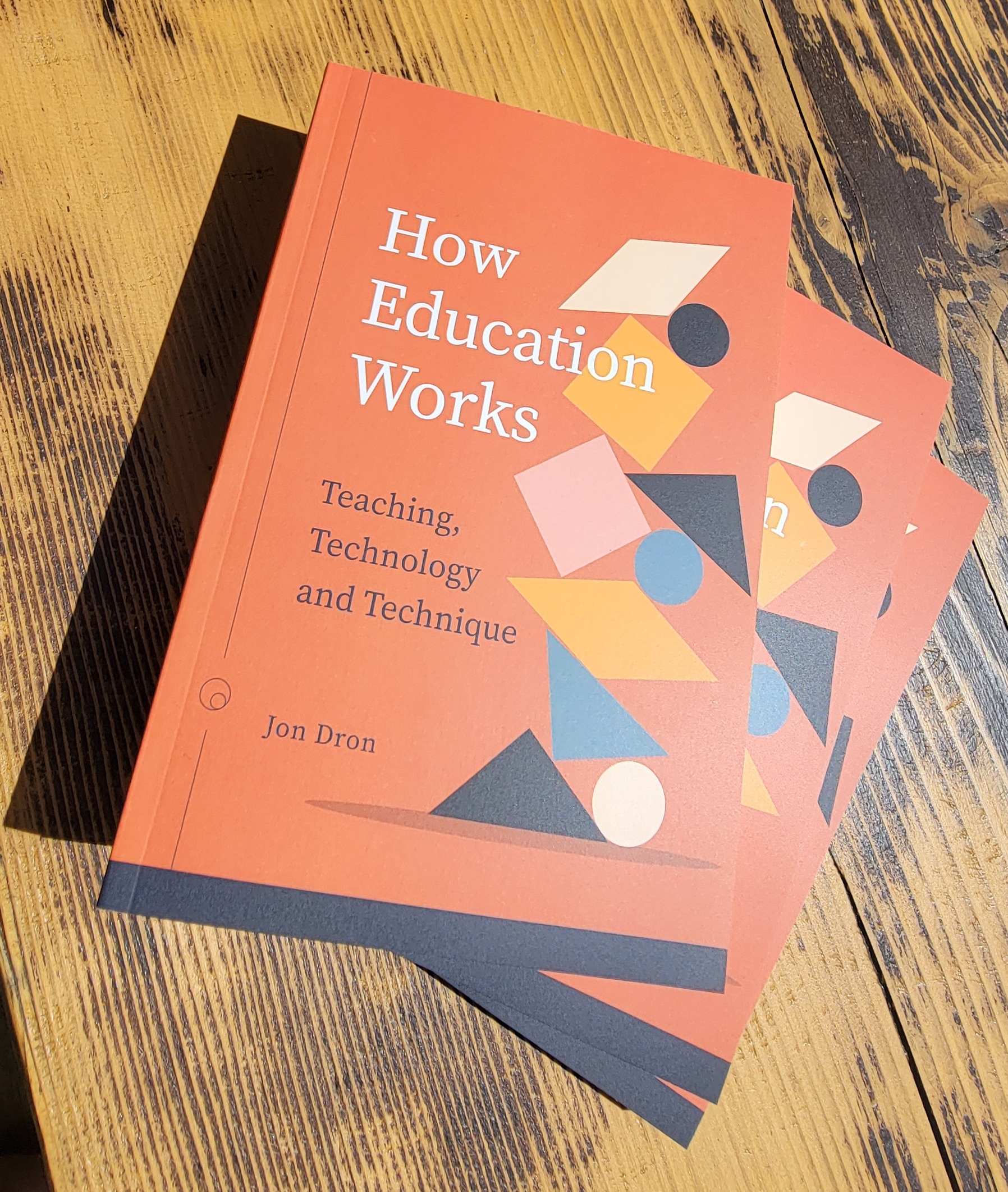Research, Writing, and Creative Process in Open and Distance Education: Tales from the Field is a great new book about how researchers in the field of open, online, and distance education go about writing and/or their advice to newcomers in the field. More than that, it is about the process of writing in general, containing stories, recommendations, methods, tricks, and principles that pretty much anyone who writes, from students to experienced authors, would find useful and interesting. It is published as an open book (with a very open CC-BY-NC licence) that is free to read or download as well as to purchase in paper form.
OK, full disclosure, I am a bit biased. I have a chapter in it, and many of the rest are by friends and aquaintances. The editor and author of one of the chapters is Dianne Conrad, the foreword is by Terry Anderson, and the list of authors includes some of the most luminous, widely cited names in the field, with a wealth of experience and many thousands of publications between them. The full list includes David Starr-Glass, Pamela Ryan, Junhong Xiao, Jennifer Roberts, Aras Bozkurt, Catherine Cronin, Randy Garrison, Tony Bates, Mark Nichols, Marguerite Koole (with Michael Cottrell, Janet Okoko & Kristine Dreaver-Charles), and Paul Prinsloo.
Apart from being a really good idea that fills a really important gap in the market, what I love most about the book is the diversity of the chapters. There’s everything from practical advice on how to structure an effective paper, to meandering reflective streams of consciousness that read like poetry, to academic discussions of identity and culture. It contains a lot of great stories that present a rich variety of approaches and processes, offering far from uniform suggestions about how best to write or why it is worth doing in the first place. Though the contributors are all researchers in the field of open and distance learning, nearly all of us started out on very different career paths, so we come at it with a wide range of disciplinary, epistemological and stylistic frameworks. Dianne has done a great job of weaving all of these different perspectives together into a coherent tapestry, not just a simple collection of essays.
The diversity is also a direct result of the instructions Dianne sent with the original proposal, which provides a pretty good description of the general approach and content that you will find in the book:
I am asking colleagues, as researchers, scholars, teachers, and writers in our field (ODL), to reflect on and write about your research/writing process, including topics such as:
* Your background and training as a scholar
* Your scholarly interests
* Why you research/write
* How you research/write
* What philosophies guide your work?
* Conflicts? Barriers?
* Mentors, opportunities
* Reflections, insights, sorrows
* Advice, takeaways
* Anything else you feel is relevant
The “personal stuff,” as listed above, should serve as jump-off points to scholarly issues; that is, this isn’t intended to be a memoir or even a full-on reflective. Use the opportunity to reflect on your own work as a lead-in/up to the scholarly issues you want to address/promote/explore.
The aim of the book is to inform hesitant scholars, new scholars, and fledgling/nervous writers of our time-tested processes; and to spread awareness of the behind-the-curtain work involved in publishing and “being heard.”
My own chapter (Chapter 3, On being written) starts with rather a lot of sailing metaphors that tack around the ways that writing participates in my cognition and connects us, moves back to the land with a slight clunk and some geeky practical advice about my approach to notetaking and the roles of the tools that I use for the purpose, thence saunters on to the value of academic blogging and how I feel about it, and finally to a conclusion that frames the rest in something akin to a broader theory of complexity and cognition. All of it draws heavily from themes and theories explored in my recently published (also open) book, How Education Works: Teaching, Technology, and Technique. For all the stretched metaphors, meandering sidetracks, and clunky continuity I’m quite pleased with how it came out.
Most of the other chapters are better structured and organized, and most have more direct advice on the process (from start to finish), but they all tell rich, personal, and enlightening stories that are fascinating to read, especially if you know the people writing them or are familiar with their work. However, while the context, framing, and some of the advice is specific to the field of open and distance learning, the vast majority of lessons and advice are about academic writing in general. Whatever field you identify with, if you ever have to write anything then there’s probably something in it for you.
Originally posted at: https://landing.athabascau.ca/bookmarks/view/19868519/research-writing-and-creative-process-in-open-and-distance-education-tales-from-the-field-open-book-publishers


